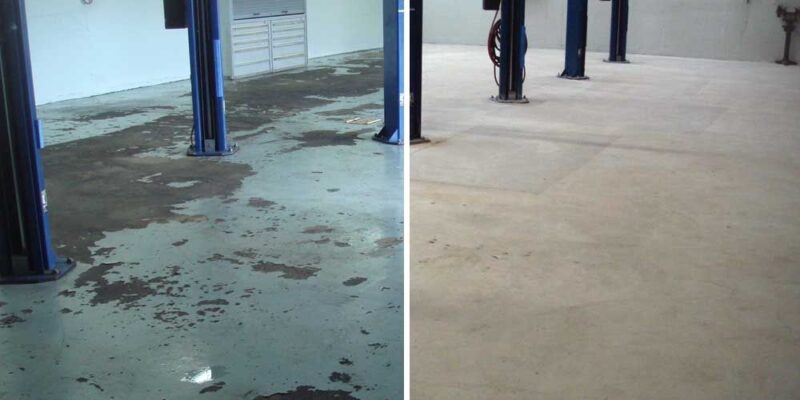Whether you’re looking to apply a new coat of paint, install tiles, or lay down epoxy coatings, the success of these projects hinges on how well you prep the surface. It’s the foundation that ensures the durability, aesthetics, and safety of flooring in rigorous industrial environments. To help you create safe, long-lasting, durable floors, let’s dive into the best practices for industrial surface preparation.
Clean and Profile the Surface
The first step toward a successful floor installation or refurbishment begins with thoroughly cleaning and profiling the surface. Cleaning ensures the removal of any dirt, grease, dust, or other contaminants that could interfere with the adhesion of new floor materials. But what does ‘profiling’ the surface mean?
In layman’s terms, profiling involves creating a slightly rough texture on the floor surface, akin to fine-grit sandpaper. This texture is crucial because it allows the new flooring material, whether epoxy, paint, or concrete, to cling securely to the floor.
Conduct a Moisture and Concrete Test
Moisture testing helps to identify the presence of moisture within the concrete slab, which, if ignored, can lead to blistering, peeling, or the degradation of the floor coating. Conversely, concrete testing assesses the concrete’s condition, including its strength, density, and composition. Understanding the concrete’s characteristics helps you choose the right materials for floor installation, preventing future disappointment and unnecessary costs.
Repair Any Surface Defects
Surface defects could range from cracks and chips to potholes and uneven areas. Ignoring them is like building a house on a weak foundation—it might not be evident immediately, but it can lead to serious issues in the future. Repairing these defects is not just about filling in gaps but about restoring the floor’s structural integrity and ensuring a uniform surface for the application of new material. It’s essential to choose the right filling compounds and repair techniques that match the underlying surface type.
Implement Dust Control Measures
It’s easy to overlook dust’s impact, but controlling it is an essential best practice for industrial floor surface preparation. Dust can interfere with the proper adhesion of floor coatings, leading to less-than-ideal results.
Effective dust control can be achieved using industrial vacuum systems and air filtration devices and by scheduling work during less windy conditions if the process is outdoors. This step is about providing the clean slate necessary for your industrial flooring to adhere properly and achieve its maximum life span.
Apply a Suitable Primer or Bonding Agent
A primer or bonding agent is key in establishing a solid foundation that ensures the flooring material bonds effectively with the surface. Selecting the right primer entails understanding the specific requirements of both the surface and the final flooring material.
Whether you’re dealing with epoxy, paint, or concrete, the primer acts as an intermediary that unites the floor with the new coating, ensuring a cohesive and durable bond. This stage cannot be overlooked; it’s essential for achieving a floor that looks professional and withstands the test of time and heavy usage.
Remember, the time and effort invested in preparing the surface are directly reflected in the quality of the finished product. However, if you don’t have the tools or time, let National Floor Solutions help. From decorative concrete to natural stone, our floor preparation services can help set the foundation for success.

